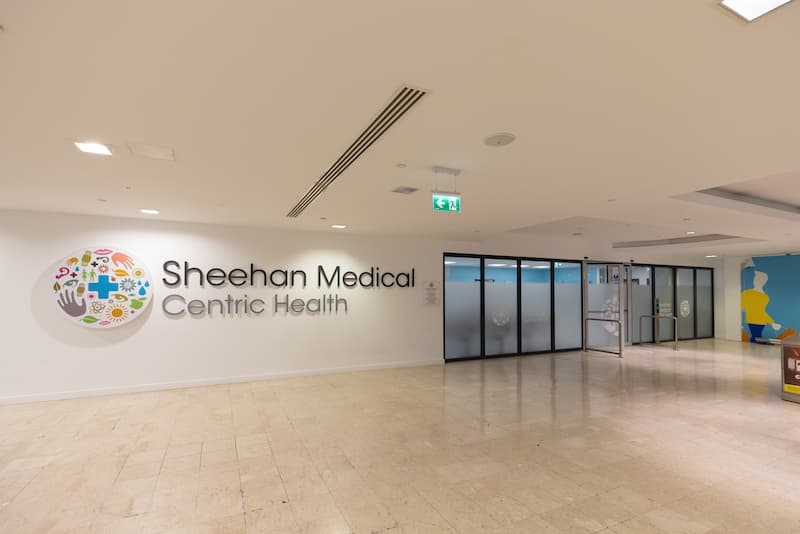Menopause Information at The Square Medical

What is Menopause?
- Every woman who lives long enough experiences menopause – defined as one year and one day after their last period when hormone levels that have been fluctuating erratically during perimenopause, eventually plummet to very low levels.
- Typically, it occurs around age 51, although the timing can vary widely. Early menopause (before age 40) can occur due to factors such as genetics, medical conditions, or surgical removal of the ovaries or hysterectomy.
Menopause and perimenopause are natural stages of life, but they can have a significant impact on a woman's physical and emotional well-being.
What is Perimenopause?
- Perimenopause is the time leading up to menopause that typically starts in a woman's 40s, but can begin earlier or later. During perimenopause, hormone levels, particularly oestrogen and progesterone, begin to fluctuate and decline, leading to changes in the menstrual cycle and various symptoms.
- Perimenopause can last for several years, with the average duration being around four years, but it can range from a few months to more than a decade.
- Fertility declines during perimenopause, and women may experience changes in their menstrual cycle, including shorter or longer cycles, heavier or lighter periods, or skipped periods.
Symptoms of Menopause and Perimenopause
Symptoms of perimenopause can vary widely among women. While some women have very few mild symptoms, about 25% can experience severe symptoms.
- The most common symptoms include hot flushes, night sweats, joint pain, intimate health changes, increased anxiety and mood changes, sleep disturbances, weight gain, and changes in hair, nails and skin.
- Symptoms of menopause are similar to those of perimenopause but may be more pronounced.
Contraception and Menopause
Once a woman has gone through menopause, she is no longer able to conceive naturally, as her ovaries stop releasing, marking the end of her reproductive years. It is, however, still possible to get pregnant around the time of the Menopause. For those who are sexually active:
- Contraception remains relevant until a year after the last period for those aged 50 or over.
- Contraception remains relevant until two years after the last period for those aged under 50.
If you are using a contraceptive, it can be difficult to know if you are post-menopausal and no longer need a contraceptive to prevent reproduction. Your doctor can advise.
Does Menopause negatively affect anything else in the body?
After menopause, women are at increased risk for certain health conditions, including osteoporosis, heart disease and diabetes.
Skin, nails and hair can suffer too while bladder, bowel control and intimate health can be negatively affected. Anxiety levels can rise and mood swings are common.
- Skin and hair. Your skin can become drier, thinner and itchier as you may lose some skin protein (collagen). Hair may also become thinner.
- Intimate Health: In the months or years after Menopause, the tissue in and around your vagina can become thinner and drier and may cause increased pain during sex. The skin next to your vagina (the vulva) can become dryer and itchier. Libido may be reduced. Women may also experience the need to urinate more frequently, have leakage and experience recurrent urinary tract infections.
- Bones. The reduction of hormones in the body around Menopause accelerates bone density loss. HRT has a protective effect on bone density and combined with resistance/weight training and other lifestyle factors and supplements, can delay the possible onset of osteoporosis.
- Heart disease. At menopause, the risk of heart disease and stroke increases. Lifestyle changes including stopping smoke, eating a healthy diet, staying at a healthy weight and exercising can help to counteract this cardiovascular risk.
- Mood during Menopause: Changes in your hormones during menopause can impact your mental health and you may experience feelings of anxiety, stress or even depression. Menopausal symptoms may include anger and irritability, anxiety, forgetfulness, loss of self-esteem, loss of confidence, low mood and feelings of sadness or depression. You may experience poor concentration, often described as 'brain fog' (8). Often you will experience problems with your sleep which can also make symptoms including irritability, inability to concentrate or anxiety worse.
How is Menopause Diagnosed?
Your doctor can usually diagnose Menopause based on your symptoms. Sometimes your doctor will order hormone blood tests, especially if you are under 45 years old or if you do not have typical symptoms.
New Menopause Treatment Service at Centric Health
The Menopause Team at Centric Health have developed an enhanced Menopause Treatment Service. Over the course of 2 visits, we assess your current health and provide you with the knowledge and advice needed to develop a treatment plan that meets your needs and preferences. Key lifestyle guidance relating to your nutrition, exercise, sleep optimisation, pharmacology, supplementation and stress reduction is also provided because our approach is not just about Hormone Replacement Therapy, it is about helping you to thrive long term.
You can now attend our Menopause Treatment Service at participating Centric Health Practices throughout Ireland, regardless of whether you are an existing patient of Centric Health or not.
To find out more about our Menopause Treatment Service, click here.
References
1. The Controversial History of Hormone Replacement Therapy, 2019
2. The 2022 Hormone Therapy Position Statement of the North American Menopause Society
3. Understanding the Risks of Breast Cancer, British Menopause Society, 2016
4. The Impact of Menopause on Bladder Symptoms, Urology News Vol 27 Issue 5, 2023
5. Recommendations on Hormone Replacement Therapy in Menopausal Women, British Menopause Society and WHC, 2020
6. Bioidentical Menopausal Hormone Therapy: Registered Hormones (non-oral Estradiol ± Progesterone) are Optimal, L’Hermite, Climacteric 2017
7. Menopause: Diagnosis and Management, National Institute for Health and Care Excellence, 2019
8. Brain Fog and Memory Difficulties in Menopause, The International Menopause Society, 2022
Acknowledgements
Mary Claire Haver, The Menopause Empowerment Guide.
Book a Menopause Service Consultation at one of our Practices

Blackrock Medical
Frascati Centre, Blackrock, Co Dublin, A94 H6V9

Dundrum Medical
Dundrum Medical Centre, Level 4, Dundrum Town Centre, Sandyford Road, Dundrum, Dublin 16, D16 XC91

Grafton Medical
Grafton Buildings, 34 Grafton Street, Dublin 2, D02 XY06

Kilcullen Medical
The Medical Centre, Main Street, Kilcullen, Co Kildare, R56 NV26

Manor Mills Medical
Manor Mills Shopping Centre, Mill Street, Maynooth, Co Kildare W23 V5X5

Medina Medical
Mill Road, Fermoy, Co.Cork, P61 NN79

Old Bawn Medical
Unit 2-3 Old Bawn Shopping Centre, Tallaght, D24 HXW3,

Raheny Medical
1st Floor, Hilltop Shopping Centre, Station Road, Raheny, Dublin 5, D05 F625

Sheehan Medical
Unit 301, 3rd Floor, Dun Laoghaire Shopping Centre, Marine Road, Dun Laoghaire, A96 DD74

Terenure Medical
84A Terenure Road East, Terenure, Dublin 6, DA6 W5A2